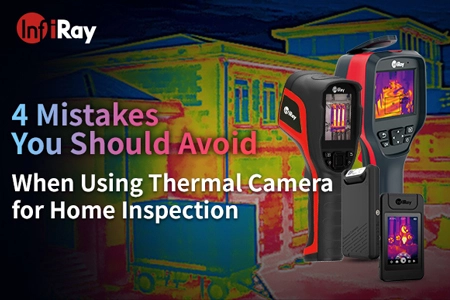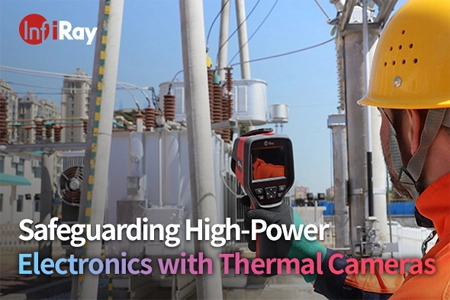Learn More About How the Infrared Thermal Security Camera Works

Thermal imaging cameras offer increased surveillance capabilities and the importance of infrared thermal cameras in security is increasing. By using the ability of infrared techniques to detect and catch thermal signals, these instruments offer a unique view that can't be seen with conventional security cameras.
The thermal camera is a device that can detect and visualize the heat emitted from an object or person instead of visible light. This enables them to operate efficiently in low-light conditions, which is a valuable advantage for various applications such as surveillance and industrial monitoring.
Unlike traditional security cameras, thermal security camera systems produce detailed thermal pictures by concentrating on the amount of heat emitted by an object, eliminating the impact of dark or bad weather.

How Does the Infrared Thermal Security Camera Work?
Figuring out what's going on inside the infrared camera needs to delve into the infrared realm. Infrared thermography detects infrared radiation and heat, and converts it into visible light images, so we can get a picture of the temperature of an object.
The thermal camera's sensor picks up infrared radiation and converts it to a visual display to produce a complex thermal imager. The process allows the camera to "see" and emphasize the temperature difference.

Infrared Thermal Security Cameras' Key Features
1. Night Vision Capabilities
A notable feature is the ability to effectively monitor your surroundings at night. The thermal camera is excellent in low light, guaranteeing continuous visibility.
2. Detection Range and Precision
This type of camera has a remarkable range of detection that enables it to identify targets and people at a great distance. Precision in thermal testing reduces the possibility of false alarms.
3. Integration with Other Security Systems
Seamless integration of IR thermal cameras into the current safety infrastructure offers a further level of protection. This integration increases the overall efficiency of safety.
4. Weather Resistance & Environmental Considerations
Built for a wide variety of meteorological conditions, they remain robust and dependable even in difficult situations. This makes them suitable for outdoor use in diverse climates.

The Advantages of Using Infrared Thermal Security Cameras
1. Enhanced Detection under Low-Light Conditions
The main benefit is that it is capable of detecting and displaying a thermal signature in total darkness, enabling uninterrupted monitoring with no reliance on outside illumination.
2. Improved Accuracy and Reduced False Alarms
A thermal camera can minimize the number of false alarms caused by variations in the visual field. Such precision is essential for efficient safety supervision.
3. Cost-effectiveness in the Long Run
Although it is possible to invest more initially, the longer-term gains, such as fewer false alarms and increased monitoring, will allow IR imaging to become a cost-effective option in the long term.
Several factors are considered when choosing a thermal safety camera. Take into account the particular needs of your security settings, budgetary limitations, and the ability to integrate with your current monitoring system.

Future Trends of Thermal Security Camera
Along with technological progress, the prospect of IR thermal safety cameras seems hopeful. Expected developments include enhanced infrared imaging capabilities, integration with artificial intelligence and analytics for more smart surveillance, and broader applications across various sectors.
Infrared thermal safety cameras provide a revolutionary means of monitoring that can be seen in situations that are not possible with conventional cameras. As technology progresses, safety systems can become much more effective.

 français
français  Deutsch
Deutsch  Español
Español  italiano
italiano  русский
русский  português
português  العربية
العربية  日本語
日本語  한국어
한국어  magyar
magyar 









